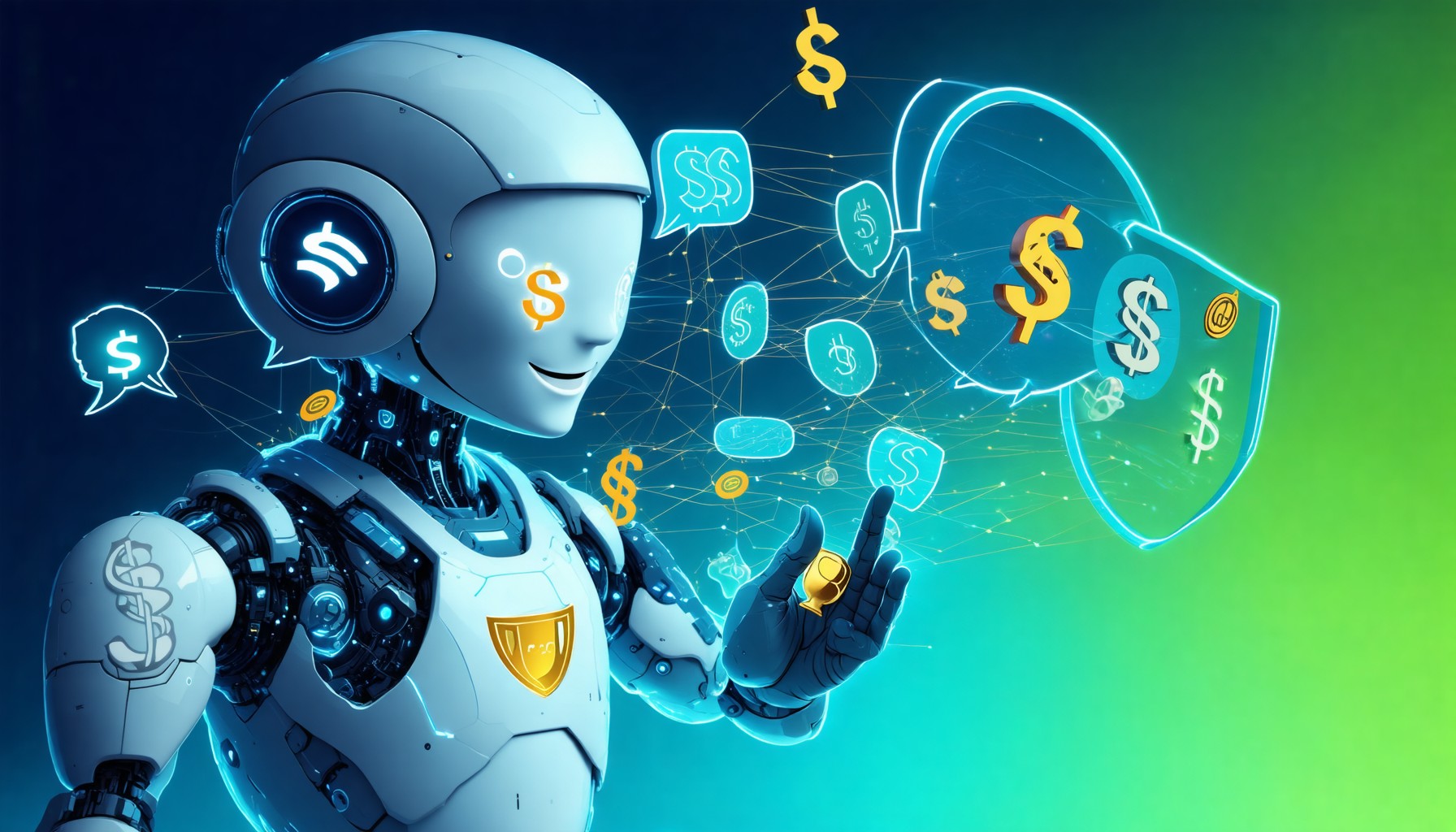Key Takeaways
- AI chatbot examples like Siri and Grammarly are transforming user interaction, enhancing communication across various platforms.
- Advanced chatbots such as Mya and Messenger Bot streamline customer service, providing instant support and improving user satisfaction.
- Industries like healthcare and e-commerce leverage AI chatbots for personalized experiences, boosting operational efficiency and sales.
- Popular AI chatbots in 2023 include Claude AI, ChatGPT, and Jasper AI, each offering unique capabilities for diverse user needs.
- Chatbots are increasingly integrated into websites, enhancing customer engagement and gathering valuable user data for strategic improvements.
- The future of AI chatbots involves greater personalization and automation, reshaping how businesses connect with customers and deliver services.
In today’s digital landscape, AI chatbot examples are revolutionizing the way we interact with technology, providing seamless communication and enhanced user experiences across various platforms. From the intuitive responses of Siri to the writing assistance offered by Grammarly, these chatbot artificial intelligence examples showcase the versatility and functionality of AI in everyday applications. This article will delve into a range of chatbot examples, exploring their unique features and roles in different industries. We will answer key questions such as, What is an example of a chatbot in AI? and Is Siri a chatbot or AI?, while also highlighting popular AI chatbots in 2023 and comparing their capabilities. Join us as we uncover the best free AI chatbot options available today and examine how these examples of AI chatbots are shaping the future of technology and user interaction.
What is an example of a chatbot in AI?
An example of a chatbot in AI is Mya, an advanced recruiting assistant that leverages natural language processing (NLP) and machine learning to streamline the recruitment process. Mya is designed to interact with candidates, answer their questions, and schedule interviews, significantly reducing the time and effort required by human recruiters.
Another notable example is the Messenger Bot, which operates within Facebook Messenger. This chatbot allows businesses to engage with customers through automated responses, providing instant support and facilitating transactions. Messenger Bots can handle inquiries, send updates, and even process orders, making them a versatile tool for enhancing customer service.
According to a report by Gartner, by 2025, 75% of customer service interactions will be powered by AI chatbots, highlighting the growing importance of these technologies in various industries. Additionally, a study published in the Journal of Business Research found that chatbots can improve customer satisfaction by providing quick and accurate responses.
In summary, chatbots like Mya and Messenger Bot exemplify the transformative impact of AI in automating tasks and enhancing user experiences across different sectors.
Best AI chatbot examples for various industries
AI chatbots are revolutionizing various industries by enhancing communication and streamlining processes. For instance, in the healthcare sector, chatbots like Buoy Health provide patients with symptom checks and direct them to appropriate care, improving access to medical advice. In the e-commerce realm, chatbots such as Drift assist customers in navigating products and completing purchases, significantly boosting sales and customer satisfaction.
Moreover, in the finance industry, chatbots like Kasisto offer personalized banking experiences, allowing users to check balances, transfer funds, and receive financial advice through conversational interfaces. These ecommerce chatbot examples illustrate how AI can enhance user engagement and operational efficiency across diverse sectors.
Examples of chatbots on websites and their functionalities
Many businesses are integrating chatbots into their websites to improve user experience and streamline customer interactions. For example, the chatbot on the IBM AI Chatbot solutions page assists visitors by answering queries about AI capabilities and directing them to relevant resources. Similarly, the Microsoft Chatbot services page features a chatbot that helps users navigate their offerings and provides support for technical issues.
These chatbots not only enhance customer service but also gather valuable data on user interactions, enabling businesses to refine their strategies. By utilizing live chatbot examples, companies can better understand customer needs and improve their service delivery.

What is the popular AI chatbot?
The popular AI chatbots currently making waves in the industry include:
- Claude AI: Developed by Anthropic, Claude AI excels in generating human-like text and is particularly noted for its ability to visualize and format structured information effectively. It has gained traction among content creators for its intuitive interface and versatility in handling various tasks.
- ChatGPT: Created by OpenAI, ChatGPT is renowned for its conversational abilities and extensive knowledge base. It is widely used for customer support, content generation, and educational purposes, making it a favorite among businesses and individuals alike.
- Jasper AI: This chatbot is tailored for marketers and content creators, offering features that assist in generating marketing copy, blog posts, and social media content. Jasper AI leverages advanced natural language processing to enhance creativity and productivity.
- Google Bard: As a product of Google, Bard integrates the latest advancements in AI and machine learning, providing users with accurate and contextually relevant responses. It is particularly useful for research and information retrieval.
- Microsoft Copilot: Integrated into Microsoft Office products, Copilot uses AI to assist users in drafting documents, creating presentations, and managing emails. Its seamless integration with familiar tools enhances user experience and productivity.
In conclusion, while Claude AI is recognized for its superior visualization capabilities, each of these chatbots offers unique features that cater to different user needs. For content creators, the choice may depend on specific requirements such as creativity, ease of use, or integration with existing tools.
Comparison of chatbot artificial intelligence examples
When evaluating chatbot artificial intelligence examples, it’s essential to consider their functionalities and applications across various sectors. For instance, IBM’s AI Chatbot is designed for enterprise solutions, focusing on customer service and operational efficiency. In contrast, Microsoft’s Chatbot services integrate seamlessly with existing software, enhancing productivity in business environments.
Moreover, Salesforce Service Cloud Bots exemplify how chatbots can improve customer interactions by providing personalized support and automating responses. Each of these examples showcases the diverse capabilities of AI chatbots, highlighting their importance in modern digital communication.
Is Alexa an AI Chatbot?
Yes, Amazon’s Alexa is considered an AI chatbot, but it functions as a voice-activated virtual assistant rather than a traditional text-based chatbot. Alexa utilizes advanced artificial intelligence and natural language processing to understand and respond to user queries, control smart home devices, play music, provide weather updates, and much more. Recent upgrades have enhanced Alexa’s capabilities, allowing it to engage in more conversational interactions, making it more akin to a chatbot. According to a CNN Business article, these improvements position Alexa to compete in the evolving landscape of AI chatbots, which includes platforms like Google Assistant and Apple’s Siri.
Key Features of Alexa as an AI Chatbot
- Voice Recognition: Alexa can accurately interpret spoken commands and questions, enabling seamless interaction.
- Contextual Understanding: The AI can remember previous interactions, allowing for more personalized responses.
- Skill Integration: Alexa supports thousands of third-party skills, expanding its functionality beyond basic commands.
- Smart Home Control: Users can manage various smart devices through voice commands, showcasing Alexa’s versatility.
Chatbot Examples for Students: How Alexa Aids Learning
Alexa serves as a valuable educational tool for students, providing a range of functionalities that enhance the learning experience. Here are some notable examples of AI chatbots like Alexa that support educational purposes:
- Homework Help: Students can ask Alexa for explanations of complex topics, definitions, or even math problems, making it a handy study companion.
- Flashcards and Quizzes: Alexa can facilitate learning through interactive flashcards and quizzes, reinforcing knowledge retention in a fun way.
- Language Learning: With its multilingual capabilities, Alexa can assist students in learning new languages by practicing pronunciation and vocabulary.
- Scheduling and Reminders: Students can use Alexa to set reminders for assignments and exams, helping them stay organized.
For more insights on how AI chatbots like Alexa are transforming education, check out our article on real-life applications of AI chatbots.
Is Siri a Chatbot or AI?
Yes, Siri is classified as an artificial intelligence (AI) system, but its functionality differs significantly from the portrayal of AI in science fiction. Siri employs advanced AI technologies, including machine learning, natural language processing (NLP), and voice recognition, to facilitate user interactions. This integration allows Siri to serve as a personal assistant, responding to queries and executing commands effectively.
Exploring Siri’s Role in AI and Chatbot Technology
Siri’s capabilities highlight the evolution of AI in personal assistance. Here are some key aspects of how Siri operates:
- Machine Learning: Siri utilizes machine learning algorithms to improve its responses over time based on user interactions. This allows it to adapt to individual preferences and provide more personalized assistance.
- Natural Language Processing: NLP enables Siri to understand and interpret human language, allowing users to communicate in a conversational manner. This technology is crucial for accurately processing voice commands and queries.
- Voice Recognition: Siri’s voice recognition capabilities allow it to identify and respond to spoken commands, making it a hands-free assistant that enhances user convenience.
While Siri is a sophisticated AI tool, it does not possess consciousness or the ability to think independently like a human. Instead, it operates based on pre-programmed algorithms and data analysis. For a deeper understanding of AI technologies, you can explore IBM’s AI Chatbot solutions or Microsoft’s Chatbot services.
Examples of AI Chatbots in Personal Assistance
In addition to Siri, there are several other AI chatbots that excel in personal assistance. These examples of AI chatbots showcase diverse functionalities:
- Google Assistant: Similar to Siri, Google Assistant uses voice recognition and NLP to assist users with tasks, answer questions, and control smart devices.
- Amazon Alexa: Alexa is known for its smart home integration and can perform a variety of tasks, from playing music to providing weather updates.
- Cortana: Microsoft’s digital assistant, Cortana, helps users manage tasks and schedules, integrating seamlessly with Microsoft Office applications.
These chatbot examples illustrate the growing role of AI in enhancing user experience through intelligent interaction. For more insights into how chatbots are transforming personal assistance, check out our article on real-life applications of AI chatbots.

Is Grammarly a Chatbot?
Grammarly is not a traditional chatbot, but it does incorporate advanced AI features that enhance its functionality. Here’s a detailed overview:
Grammarly’s Core Function
Grammarly primarily serves as a writing assistant, utilizing artificial intelligence to help users write more clearly and effectively. It identifies and corrects errors in grammar, spelling, punctuation, and style, while also suggesting improvements to enhance clarity and tone.
Generative AI Features
Recently, Grammarly has integrated generative AI capabilities, including an AI Chat feature. This allows users to compose new text, rewrite existing content, and generate ideas for various writing tasks. These features are designed to assist users in enhancing their writing quality.
Best Chatbot Examples for Enhancing Writing Skills
When it comes to improving writing skills, several AI chatbot examples stand out. These chatbots not only assist with grammar and style but also provide personalized feedback and suggestions. Here are some notable examples:
- ChatGPT: Known for its conversational abilities, ChatGPT can help users brainstorm ideas, refine their writing, and even simulate dialogue for creative writing projects.
- Jasper AI: This AI writing assistant excels in generating content ideas and drafting articles, making it a valuable tool for content creators.
- Brain Pod AI: With its advanced writing capabilities, Brain Pod AI offers tools for generating high-quality text and can be particularly useful for marketers and writers looking to enhance their content. Learn more about Brain Pod AI here.
- Quillbot: This AI tool focuses on paraphrasing and summarizing text, helping users improve their writing by suggesting alternative phrasing and enhancing clarity.
These examples of AI chatbots demonstrate how technology can significantly enhance writing skills, making them invaluable resources for anyone looking to improve their communication abilities.
What is the best free AI chatbot?
When considering the best free AI chatbots available, several options stand out due to their unique features and capabilities:
- ChatGPT: Developed by OpenAI, ChatGPT is widely recognized for its advanced language processing abilities. It can engage in natural conversations, answer questions, and assist with a variety of tasks, making it a top choice for users seeking versatility.
- Anthropic’s Claude: This chatbot emphasizes user privacy and provides thoughtful, in-depth responses. It is particularly suitable for sensitive topics and detailed analyses, making it a reliable option for users who prioritize confidentiality.
- Perplexity.ai: Functioning as both a chatbot and an AI search engine, Perplexity.ai excels in delivering concise, informative answers. It also includes the ability to cite sources, enhancing the credibility of the information provided.
- Microsoft Copilot: Seamlessly integrated with Microsoft products, Copilot offers a user-friendly experience and a broad range of functionalities. It is particularly beneficial for users who are already embedded within the Microsoft ecosystem.
- Google Bard: As Google’s own chatbot, Bard has access to real-time information from the web. This feature makes it an excellent resource for research, shopping, and travel planning, providing users with up-to-date and relevant data.
- Jasper: Tailored for businesses and marketers, Jasper specializes in generating various content types, including blog posts, emails, and marketing scripts. Its focus on content creation makes it a valuable tool for professionals in the marketing sector.
In summary, the best free AI chatbots include ChatGPT for its overall versatility, Claude for privacy and depth, Perplexity.ai for concise answers with citations, Microsoft Copilot for integration with Microsoft tools, Google Bard for real-time information, and Jasper for content generation. Each of these chatbots offers unique strengths that cater to different user needs, making them top contenders in the AI chatbot landscape.
AI chatbot examples for students and their benefits
AI chatbots can significantly enhance the learning experience for students by providing personalized assistance and resources. Here are some notable examples:
- Duolingo Chatbot: This chatbot helps students learn new languages through interactive conversations, making language acquisition more engaging and effective.
- Quizlet: The Quizlet chatbot assists students in studying by generating quizzes and flashcards based on the material they need to learn, promoting active recall and retention.
- Edmodo: This educational platform features a chatbot that facilitates communication between students and teachers, allowing for quick feedback and support outside of classroom hours.
- Brainly: Brainly’s chatbot connects students with peers and experts who can help answer homework questions, fostering collaborative learning and problem-solving.
These AI chatbot examples not only provide immediate assistance but also encourage independent learning and collaboration among students, making them invaluable tools in modern education.
Conclusion: The future of AI chatbots and their evolving roles
As we look towards the future, the role of AI chatbots is set to expand significantly across various sectors. The integration of ai chatbot examples into everyday business operations is transforming how companies interact with customers, streamline processes, and enhance user experiences. The evolution of chatbot artificial intelligence examples is not just about automation; it’s about creating more personalized and engaging interactions that cater to user needs.
The impact of chatbot examples on user experience
Chatbot examples, such as those utilized by Messenger Bot, demonstrate the profound impact these tools have on user experience. By providing instant responses and tailored interactions, businesses can significantly improve customer satisfaction. For instance, automated responses allow users to receive immediate assistance, reducing wait times and enhancing engagement. Furthermore, the ability to handle multiple inquiries simultaneously ensures that businesses can maintain high levels of service without overwhelming their human staff.
Additionally, the use of customer service chatbot solutions has shown that users appreciate the efficiency and availability of AI-driven support. This not only fosters loyalty but also encourages repeat business, as customers feel valued and understood.
Emerging trends in chatbot technology and applications
The landscape of chatbot technology is rapidly evolving, with several emerging trends shaping its future. One significant trend is the increasing use of chatbot examples that leverage machine learning and natural language processing to enhance conversational abilities. This advancement allows chatbots to understand context better and respond more accurately to user queries.
Moreover, the integration of real-life applications of AI chatbots across industries, from e-commerce to healthcare, showcases their versatility. For example, e-commerce platforms are utilizing chatbots to assist with product recommendations and cart recovery, significantly driving sales and improving customer experience. As these technologies continue to advance, we can expect even more innovative applications that will redefine user interactions and business operations.




